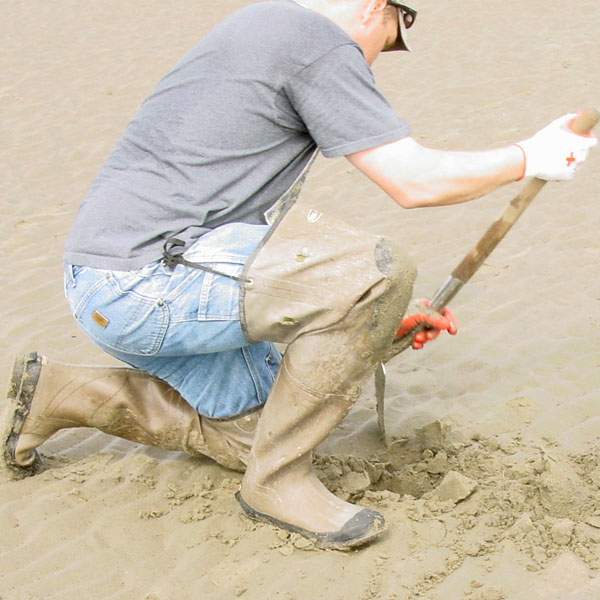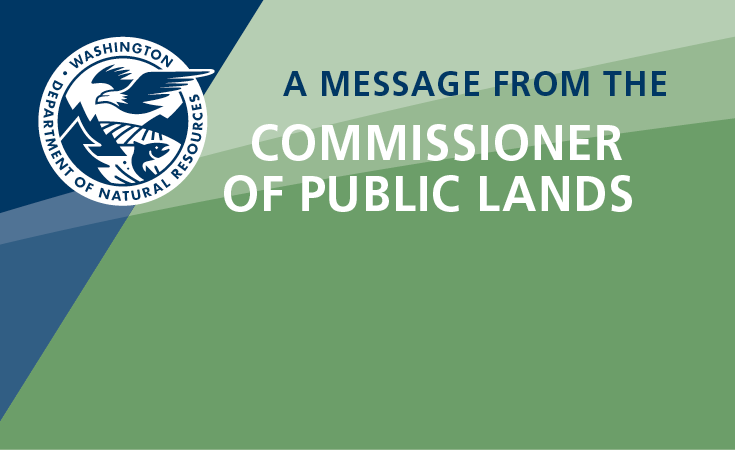Razor Clams

Digging razor clams commercially? Check with DNR first.
Washington’s commercial wild stock razor clam fishery occurs in spring and summer on the detached sand spits lying north of Leadbetter Point in Willapa Bay, Pacific County. The sand spits occupy about 7 square miles of state-owned tidelands managed by DNR.
DNR is requiring a Right of Entry for the 2025 commercial razor clam season. Harvesters may apply for the required DNR right-of-entry license one of two ways:
- In Person:
- Visit the Dept. of Natural Resources (DNR) main office building located at 1111 Washington St SE, Olympia WA 98504-7027.
- Starting March 24th through the end of the season, Monday through Thursday between 9:00 am and 3:30 pm.
- Please bring your WDFW license, and check or money order in the amount of One Hundred Dollars ($100), payable to Washington State Dept. of Natural Resources.
- Via email send the following information to razorclam@dnr.wa.gov:
- First and Last Name
- Mailing Address
- Cell Phone Number
- Email Address
- Unified Business Identifier (UBI) - if applicable
- PDF copy of your current WDFW License
- PDF copy of your Driver's License or Government Issued Identification
Mail check or money order in the amount of One Hundred Dollars ($100), payable to Washington State Dept. of Natural Resources to:
Washington State Dept. of Natural Resources
Aquatic Resources Division
1111 Washington St SE
Olympia, WA 98504-7027
Once DNR receives your license fee you will receive an email from DocuSign to electronically sign your Right of Entry agreement. Once you have signed DNR will electronically sign and DocuSign will send you a final email with the completed ROE Right of Entry. Print out a copy of the Right of Entry and keep it with you while harvesting razor clams.
Questions? Call our offices at (360) 338-2726 or email razorclam@dnr.wa.gov. Applicants must be 18 years of age or older.
Washington State Agencies Involved in the Commercial Razor Clam Fishery
- The Washington State Department of Fish and Wildlife (WDFW) regulates the fishery and issues the licenses. WDFW ensures the sustainability of the commercial fishery, monitors clam populations, establishes harvest seasons, tracks catches, and ensures compliance with laws.
- The Washington State Department of Health (DOH) certifies razor clam dealers and works with WDFW to ensure the shellfish are safe for human consumption.
- As the proprietor of these state-owned tidelands, DNR manages the uses that take place on these lands. To fulfill this role, DNR must consider the potential long-term impacts of activities, authorize access, and seek compensation for use of the public’s natural resources, especially when used for commercial purposes.
Why does DNR require a Right-of-Entry for commercial razor clam harvesting?
All commercial uses on state-owned aquatic lands require a right-of-entry authorization for the use of state-owned aquatic lands and the harvest of public resources. Beginning 2012, DNR required a right-of-entry for individual harvesters to ensure that best management practices (BMPs) are applied at the site. These practices help harvesters protect critical habitat that other species, such as the western snowy plover, share at the site.
About The Willapa Bay Commercial Razor Clam Fishery
Willapa Bay Harvest Season
The commercial razor clam season usually runs 60 days in spring through summer. Generally, the most productive commercial razor clam harvests on the Willapa Bay sand spits occur between tidal elevations of -3.0 and +2.0 feet, but can extend to +3.0.
Commercial harvesters access the spits by boat. Typically during the clamming season, 70 to 80 individual harvesters will be spread across the roughly seven square mile area of sand spits. During low tide events, clams are hand dug, placed in buckets, and hauled back to the waiting boat. At the end of the day, the harvesters transport and sell their catch to razor clam buyers.
The product is used as bait for local crabbing activities and also for human consumption.
About the Willapa Bay Tideland Sand Spits
The sand spits are part of a dynamically moving expanse of sand near the mouth of Willapa Bay, continually changing as the result of wind, waves, and tides. These spits are sometimes shaped into sand islands that rise above the line of mean higher high water (MHHW) of +8.92 feet. These "islands" provide unique habitat isolated from predators on the Long Beach Peninsula.
The Willapa National Wildlife Refuge is on the north end of the Long Beach Peninsula at Leadbetter Point. Although this area is designated for commercial harvest, it is also considered critical habitat for nesting western snowy plover - a shorebird that is federally listed as "threatened" with extinction under the Endangered Species Act. DNR's Natural Areas Programs coordinate with WDFW and the US Fish and Wildlife Service to monitor and protect these shorebirds and their habitat.


